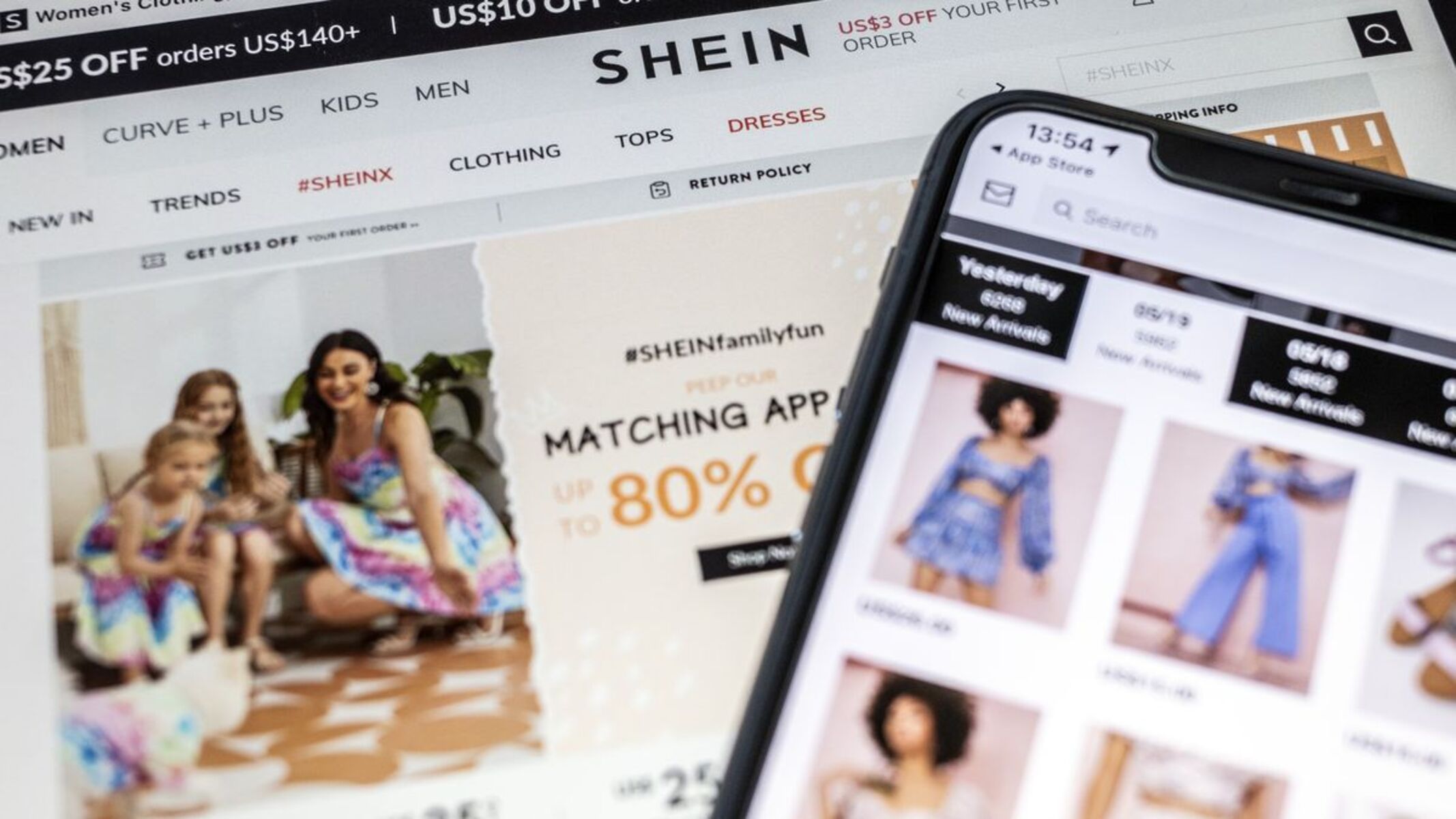The Rise of Fast Fashion
Fast fashion has taken the global fashion industry by storm in recent years. With its ability to quickly replicate runway trends and offer affordable clothing options, fast fashion brands have become a go-to choice for many consumers. However, the rise of fast fashion has come at a significant cost.
One of the main driving factors behind the popularity of fast fashion is the constant cycle of new fashion trends. Fast fashion brands like Zara and H&M churn out new clothing collections at an astonishing pace to keep up with consumer demand. This constant cycle encourages consumers to purchase more and more, leading to a culture of disposable fashion.
Another key aspect of fast fashion is the low cost of production. Many fast fashion brands outsource their manufacturing to countries with low labor costs, often resulting in poor working conditions and exploitation of workers, particularly in developing countries. This unethical approach to production has raised concerns about the human rights and social impact of the fast fashion industry.
Fast fashion also has a detrimental effect on the environment. The excessive production and consumption of cheap clothing lead to a significant amount of waste. Many garments are made from synthetic materials that do not biodegrade, adding to the already mounting problem of textile waste. Additionally, the production of these materials contributes to pollution and carbon emissions.
The rise of fast fashion has created a culture of overconsumption and waste, leading to serious environmental and social consequences. However, there is a growing recognition of the need for change, both from consumers and within the fashion industry itself.
In the following sections, we will explore how clothing apps are playing a crucial role in reducing the impact of fast fashion and offering sustainable alternatives for fashion-conscious consumers.
The Environmental Impact of Fast Fashion
The rapid growth of fast fashion has taken a toll on the environment. The production, distribution, and disposal of fast fashion garments contribute to various environmental issues.
One of the significant environmental concerns of fast fashion is the massive amount of water consumption. The production of textiles, particularly cotton, requires substantial amounts of water. It takes approximately 2,700 liters of water to produce a single cotton t-shirt. The water-intensive processes, coupled with the increasing demand for fast fashion, lead to the depletion of water resources in regions already facing water scarcity.
In addition to water consumption, fast fashion is also responsible for toxic chemical pollution. The use of synthetic dyes and chemicals in the production process results in the release of harmful substances into water bodies and soil. These pollutants not only harm aquatic ecosystems but also pose risks to human health.
The carbon footprint of fast fashion is another pressing concern. The global transportation of clothing items from manufacturing sites to retail stores emits a significant amount of greenhouse gases. Moreover, the manufacturing process itself, particularly in countries with lax environmental regulations, leads to high levels of carbon emissions.
Furthermore, the disposal of fast fashion garments exacerbates the problem of textile waste. In the quest for the latest trends, many consumers discard perfectly wearable clothing items, which end up in landfills. Synthetic fabrics, such as polyester, can take hundreds of years to decompose, adding to the growing issue of textile waste and contributing to the overall burden on landfills.
The environmental impact of fast fashion is staggering, but there is hope for change. Clothing apps are emerging as a sustainable solution, providing alternatives to traditional fast fashion consumption patterns. These apps offer a range of services, including virtual fitting rooms, clothing rental options, and platforms for buying and selling secondhand clothing.
In the next sections, we will delve into the ways in which clothing apps are aiding in reducing the environmental impact of fast fashion and promoting a more sustainable approach to fashion consumption.
The Role of Clothing Apps in Reducing Fast Fashion
Clothing apps have emerged as powerful tools in combating the negative effects of fast fashion. They not only provide convenience and accessibility to consumers but also promote sustainable practices and encourage conscious fashion choices.
One of the key ways clothing apps contribute to reducing fast fashion is by offering virtual fitting rooms. These virtual platforms allow users to try on clothes virtually, eliminating the need for physical try-ons and subsequent returns. By enabling customers to visualize how garments fit and look on them, virtual fitting rooms minimize the urge to purchase multiple sizes or styles, reducing the number of returns and ultimately the environmental impact of transportation and waste from returned items.
Moreover, clothing rental apps have gained popularity as a sustainable alternative to fast fashion. These apps allow users to rent clothing for a specific period, encouraging a shift from owning to sharing fashion items. By renting out clothes instead of buying new ones, consumers can enjoy the benefits of wearing trendy clothing without contributing to the cycle of overconsumption and waste. Rental apps also promote a more circular economy, where garments are utilized to their fullest potential, reducing the demand for new production.
Secondhand clothing apps have also played a crucial role in reducing fast fashion. These platforms connect buyers and sellers of pre-loved clothing, offering a convenient marketplace for thrifty and eco-conscious consumers. By extending the lifespan of clothing items, these apps help divert garments from landfills and reduce the need for new production. Additionally, secondhand apps contribute to a more diverse and unique fashion market, allowing users to discover one-of-a-kind pieces and promote individual style.
Furthermore, ethical and sustainable fashion apps play a vital role in reducing fast fashion’s impact. These apps curate and showcase brands that prioritize ethical and sustainable practices, providing a platform for consumers to make informed choices. By supporting responsible brands that employ fair labor practices, use eco-friendly materials, and prioritize transparency, users of these apps can directly contribute to the promotion of sustainable fashion and push for change within the industry.
Virtual Fitting Rooms: A Game Changer in the Fashion Industry
Virtual fitting rooms have emerged as a game changer in the fashion industry, revolutionizing the way consumers shop for clothes and reducing the reliance on traditional brick-and-mortar retail stores. These innovative tools leverage advanced technology to provide users with a virtual try-on experience, making it easier and more convenient to find the perfect fit without physically trying on clothes.
One of the key advantages of virtual fitting rooms is their ability to overcome the limitations of physical try-ons. Traditionally, trying on clothes in-store involves navigating crowded changing rooms, waiting in long queues, and dealing with the inconvenience of trying on multiple sizes and styles. With virtual fitting rooms, users can virtually visualize how clothes will fit on their body, saving time and effort.
Virtual fitting rooms utilize augmented reality (AR) and virtual reality (VR) technologies to superimpose clothing onto a user’s image or create a lifelike virtual environment where users can interact with digital clothing. By inputting accurate measurements and body shapes, users can see how different garments will look on them, adjusting sizes and styles accordingly. This immersive experience not only streamlines the shopping process but also reduces the environmental impact associated with return shipments and waste from ill-fitting items.
Another significant advantage of virtual fitting rooms is their inclusivity. These tools cater to individuals of all body types, allowing for a more inclusive and diverse representation in the fashion industry. By offering a wide range of sizes and providing visualizations of how clothes will look on different body shapes, virtual fitting rooms empower users to find clothing that fits their unique characteristics. This promotes body positivity and reduces the frustration and discouragement that often arises from limited size options in traditional retail settings.
Beyond the convenience and inclusivity they offer, virtual fitting rooms also have the potential to simulate real-world situations, such as the ability to visualize how a garment moves or drapes when walking or sitting. This enhances the overall shopping experience, providing users with a more accurate understanding of how a piece of clothing will look and feel in various contexts. By bridging the gap between the online and offline shopping experience, virtual fitting rooms foster trust and confidence in purchasing decisions.
As virtual fitting rooms continue to evolve and improve, their impact on the fashion industry is set to grow significantly. These tools not only enhance the shopping experience for consumers but also have the potential to reduce the environmental impact of fast fashion by reducing the need for physical try-ons and subsequent returns. With the continued development of technology and more widespread adoption of virtual fitting rooms, the fashion industry is moving towards a more efficient and sustainable future.
Clothing Rental Apps: A Sustainable Alternative to Fast Fashion
In response to the growing concerns associated with fast fashion, clothing rental apps have emerged as a sustainable alternative, offering a new way for consumers to enjoy fashionable clothing without contributing to the cycle of overconsumption and waste.
Clothing rental apps provide users with the opportunity to rent garments for a specific period, allowing them to access a diverse range of styles and trends without the need to purchase them. This model promotes a shift from ownership to sharing and encourages a more circular economy in the fashion industry.
One of the key benefits of clothing rental apps is the reduction in textile waste. By renting clothes instead of buying them, users can enjoy the latest fashion trends while minimizing the environmental impact. Since garments are shared among multiple users, the overall demand for new clothing production decreases, leading to a decrease in the consumption of natural resources, water, and energy required for manufacturing.
Moreover, clothing rental apps provide an opportunity for users to experiment with their style and try out new trends without the long-term commitment. Many people hesitate to purchase trendy clothing items that they may only wear a few times, leading to wasted resources and contributing to the problem of clothing waste. With rental apps, users can wear outfits that suit their needs for specific occasions or events and return them when they are no longer needed.
The affordability factor is another advantage of clothing rental apps. Renting clothing often costs a fraction of the price it would to purchase the same garments. This makes high-end and designer brands more accessible to a wider audience and allows individuals to elevate their style without breaking the bank. By making fashion more affordable, rental apps also contribute to reducing the demand for cheaply produced, low-quality fast fashion items.
Clothing rental apps also promote a more sustainable and ethical fashion industry by working with brands that prioritize sustainability and conscious manufacturing practices. Many rental platforms partner with eco-friendly and ethical fashion labels, ensuring that the garments available for rent are produced using sustainable materials and fair labor practices.
By promoting the sharing economy and providing a sustainable alternative to fast fashion, clothing rental apps play a crucial role in reshaping the way we consume fashion. They offer a win-win situation for both consumers and the environment, providing access to a wide range of clothing options while reducing waste and the overall environmental impact of the fashion industry.
Secondhand Apps: The Thrifty and Eco-Friendly Choice
Secondhand clothing apps have become increasingly popular in recent years, offering thrifty and eco-friendly alternatives to fast fashion. These apps provide a convenient platform for buying and selling pre-loved clothing, extending the lifespan of garments and reducing the environmental impact of the fashion industry.
One of the key advantages of secondhand clothing apps is the economic benefit they provide to users. By purchasing secondhand clothing, individuals can access high-quality, stylish pieces at a fraction of the original retail price. This thrifty option allows budget-conscious consumers to diversify their wardrobe and experiment with different styles without breaking the bank. The affordability factor also contributes to reducing demand for fast fashion items, thereby lessening the reliance on cheaply produced and often unethical garments.
Using secondhand apps also contributes to the reduction of textile waste. The fashion industry is notorious for its high levels of clothing discard, with many garments ending up in landfill sites. Secondhand apps provide a sustainable solution by giving these items a second chance at life. By reselling and purchasing pre-owned clothing, consumers help divert garments from landfills and contribute to a more circular fashion economy, where resources are maximized and waste is minimized.
Furthermore, secondhand apps promote the concept of slow fashion and encourage a more mindful and intentional approach to consumption. By shopping secondhand, individuals reduce the demand for new clothing production, which in turn reduces the use of natural resources, water, and energy required for manufacturing. This aligns with principles of sustainability and environmental consciousness.
Secondhand apps also provide a unique opportunity for individuals to express their personal style. Many of the items available on these platforms are vintage or one-of-a-kind pieces, allowing users to create distinctive and individualized looks. By embracing secondhand fashion, individuals can embrace their creativity and stand out from the crowd.
Beyond the environmental and economic benefits, secondhand clothing apps also contribute to building a sense of community. These platforms create a space where like-minded individuals can connect, share and celebrate their love for fashion. Whether it’s through engaging in conversations about sustainable fashion or participating in clothing swaps and collaborations, users of secondhand apps can foster a supportive and inclusive community.
Ethical and Sustainable Fashion Apps: Supporting Responsible Brands
Ethical and sustainable fashion apps have emerged as a powerful tool for supporting responsible brands and promoting a more sustainable future within the fashion industry. These apps curate and showcase brands that prioritize ethical practices, sustainability, and transparency, empowering consumers to make informed choices about their fashion purchases.
One of the key advantages of ethical and sustainable fashion apps is their ability to provide consumers with access to a wide range of responsible brands and their products in one centralized platform. These apps serve as a digital marketplace for conscious consumers, who can easily browse through a diverse selection of sustainable fashion options. By consolidating these brands into one space, ethical fashion apps make it easier for consumers to discover and support responsible companies.
Moreover, these apps help bridge the gap between consumers and the brands’ stories. Ethical and sustainable fashion brands often have compelling narratives behind their products, such as fair trade practices, using organic or recycled materials, or supporting artisan communities. By sharing these stories, ethical fashion apps connect consumers with the values and missions of the brands they are considering, fostering a deeper connection and sense of trust.
Another significant aspect of ethical fashion apps is their commitment to transparency. They provide detailed information about the sourcing and production methods of the brands they feature, allowing consumers to make informed choices based on their own ethical preferences. This transparency also holds brands accountable and encourages them to continuously improve their sustainability practices.
By supporting ethical and sustainable fashion brands through these apps, consumers play a crucial role in creating demand for responsible practices. As more individuals choose to shop from these brands, it sends a clear message to the industry that sustainability is a priority. This, in turn, incentivizes other fashion brands to adapt their practices and embrace more ethical and sustainable approaches.
Furthermore, ethical fashion apps promote diversity and inclusivity within the industry. These platforms often feature brands that are inclusive in their sizing, cater to a diverse range of body types, and embrace models from different backgrounds. By supporting such brands, consumers contribute to a more inclusive and equitable fashion industry.
The growth of ethical fashion apps has also spurred collaborations and partnerships between brands, further amplifying their impact. These apps often organize events, campaigns, and initiatives that promote sustainable fashion and educate consumers on the importance of conscious consumption. By joining forces, ethical fashion brands collectively work towards driving positive change, raising awareness, and challenging the status quo of the fashion industry.
The Future of Clothing Apps and the Potential for Change
Clothing apps have already made significant strides in redefining the fashion industry and promoting sustainable practices. However, their potential for driving change goes far beyond their current capabilities. The future of clothing apps holds immense possibilities for further revolutionizing the way we consume and interact with fashion.
One of the areas with great untapped potential is the integration of artificial intelligence (AI) and machine learning into clothing apps. These technologies can enhance the virtual fitting room experience by analyzing body measurements and providing more accurate recommendations for sizing and fit. AI algorithms can learn from users’ preferences and make personalized style suggestions, helping users discover new brands and create unique fashion combinations.
Additionally, as technology evolves, we can expect advancements in the visualization and realism of virtual clothing. Virtual fitting rooms may become even more immersive, allowing users to not only see how clothes fit but also feel the fabric’s texture and assess the quality of the garments virtually. This advancement has the potential to bridge the gap between online and offline shopping experiences, providing users with a more complete sense of the garments they are considering.
Clothing apps could also play a vital role in promoting sustainability through increased access to information about the environmental and social impact of fashion brands. Apps can include sustainability ratings or certifications, allowing users to quickly evaluate the ethical practices behind different brands. This transparency empowers consumers to make educated choices based on their values and encourages brands to prioritize sustainability to attract and retain customers.
Furthermore, the use of blockchain technology holds promise for enhancing supply chain transparency within the fashion industry. By recording and verifying every step of the production and distribution process on a decentralized ledger, clothing apps can provide users with an unprecedented level of traceability. Consumers can have assurance that the garments they purchase are produced ethically and sustainably, while brands can demonstrate their commitment to responsible practices.
The future of clothing apps also lies in their ability to foster collaboration and collective action. By connecting users with like-minded individuals and organizations, these platforms can facilitate clothing swaps, community initiatives, and knowledge sharing. Such collaborations can empower users to actively participate in the sustainability movement and contribute to systemic change within the fashion industry.
As technology continues to advance and consumer demand for sustainable fashion grows, clothing apps have the potential to become powerful catalysts for change. Through innovation, collaboration, and user engagement, these apps can reshape the fashion landscape, promoting conscious consumption, sustainability, and a more inclusive and equitable industry.





